Ever wondered what the hidden psychology behind birthday cake colours are, and how they influence guest, and make them to react the way they do at events?
When people come together around a birthday cake, cameras go off, laughter fills the space, and the cake often serves as the emotional focus of the celebration.
However, many are unaware that beyond its taste and design, the color of a birthday cake quietly affects how guests feel. This can be excitement, calmness, joy, nostalgia, or even hunger (which obviously emanates from craving for the cake).
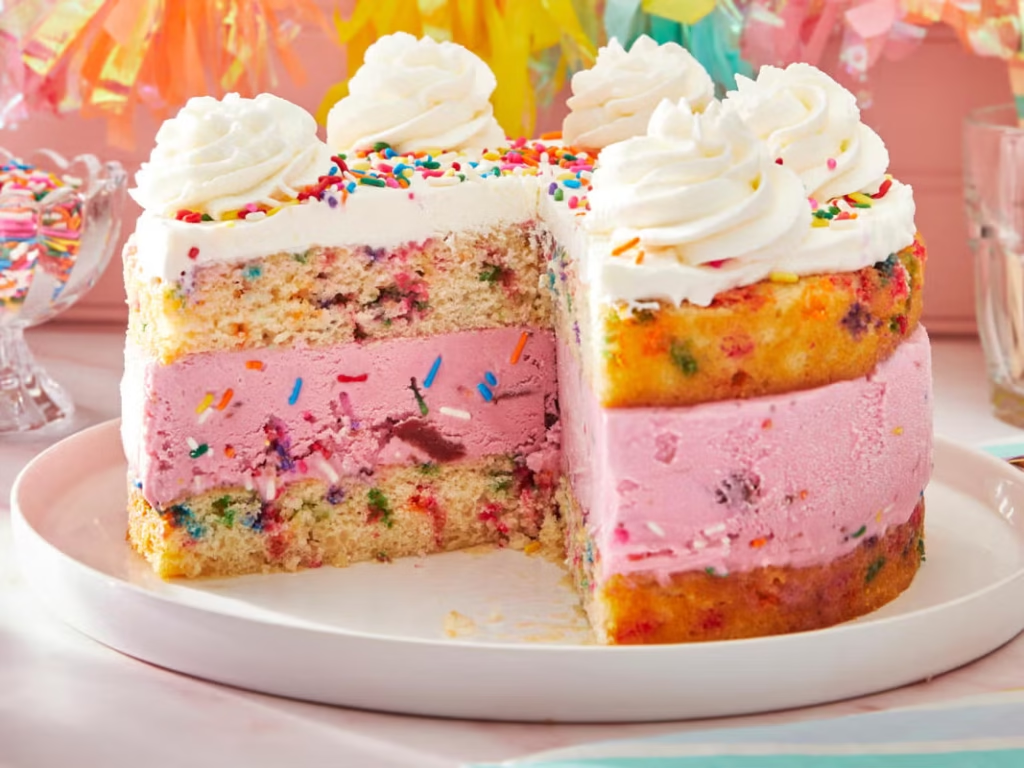
Colors hold emotional meanings. They influence perception, change mood, and create memories. In the psychology of events, these colors can decide if your birthday party feels lively, romantic, classy, or boring. This is why top event planners, bakers, and decorators now consider color psychology as important as the ingredients in their recipes.
The Science of Color and Emotion
Psychologists have extensively researched how colors impact human feelings and actions. According to color psychology, each shade evokes a subconscious reaction. Bright colors like red and yellow spark excitement, while cooler shades like blue or lavender soothe the mind.

At social gatherings like birthdays, these emotional cues affect how guests interact, the mood of the event, and lasting impressions.
For instance, a birthday cake with bright orange icing can create a lively and energetic vibe, while one adorned in soft pastels can foster a sense of calm elegance. When guests enter an event, they don’t merely “see” the cake; they experience it. The colors convey a message even before the candles are lit.
1. Red (The Color of Energy, Passion, and Appetite)
Red is one of the most psychologically impactful colors used in cakes. It captures attention, raises heart rates, and boosts appetite, which is why it’s favored by restaurants.
A birthday cake adorned with shades of red, crimson, or berry conveys a strong message: celebration with fervor. It’s perfect for lively personalities, romantic occasions, or shared birthdays for couples.
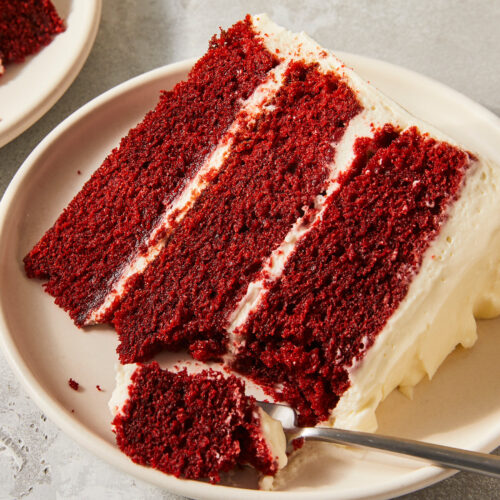
In an event context, red hues often encourage guests to be more social and lively. However, red should be paired with neutral shades (like white or cream) to prevent overwhelming stimulation. A red velvet cake, for instance, strikes this balance beautifully.
2. Blue (The Color of Calmness and Confidence)
Blue is not a common color for food; in fact, nature seldom offers blue foods. Nevertheless, in event psychology, blue birthday cakes have a tranquil, contemporary charm. They inspire trust, serenity, and creativity.
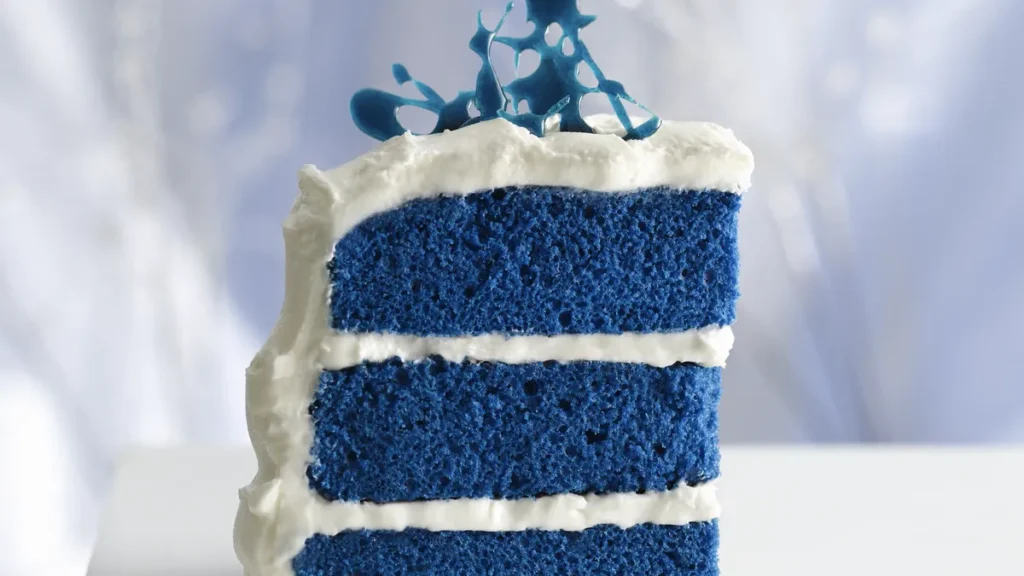
A light blue cake is suitable for milestone birthdays, baby showers, or intimate family gatherings where warmth and emotional bonds matter more than loud celebrations.
Navy or royal blue shades convey sophistication and confidence, ideal for adult birthday parties or corporate-themed events.
Interestingly, blue lighting and decorations can even alter guests’ perception of time, making the event feel more seamless and relaxing.
READ ALSO: How to Bake Wedding Cakes That Double as Brand Logos (A Designer’s Guide)
3. Yellow and Gold
Few colors bring joy like yellow. Linked to sunshine and laughter, a yellow-themed birthday cake instantly brightens a space. It stands for optimism, positivity, and good vibes; everything a birthday should embody.
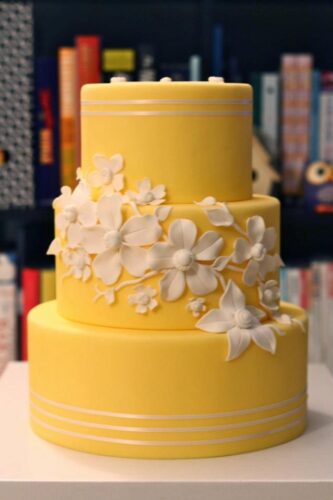
Psychologically, yellow promotes conversation and friendliness. Guests often feel more at ease, chatty, and uplifted in warm shades.
When combined with gold, the mood shifts from cheerful to luxurious. Gold details on a cake evoke feelings of celebration, success, and status.
It’s no surprise that golden cakes are popular for milestone events like 30th, 40th, and 50th birthdays; they acrually (unknown to many) serve as visual reminders of achievement and self-worth.
4. Pink (Romance and Kindness)
This should make you thonk towards Valentine’s Day, right?
Pink is frequently seen as “feminine,” but psychologically, it symbolizes affection, care, and warmth; feelings that go beyond gender. A pink cake brings forth tenderness and emotional ties, which is why it’s favored for intimate or family-oriented occasions.
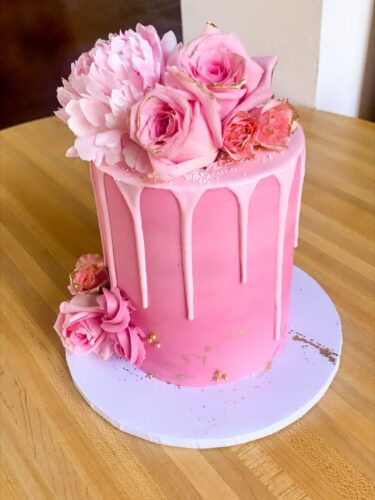
Soft pastel pinks convey innocence and nostalgia, while richer rose or fuchsia tones signify confidence and contemporary style. When adorned with floral decorations, pink cakes subtly invite comfort and joy, making guests feel emotionally connected to the experience.
Pink shades are particularly effective for surprise parties, anniversaries, or celebrations aimed at laying emphasis on love and togetherness.
5. Green
Green represents nature, tranquility, and fresh starts. In birthday cakes, it symbolizes harmony and optimism. It is ideal for those embarking on new life journeys.
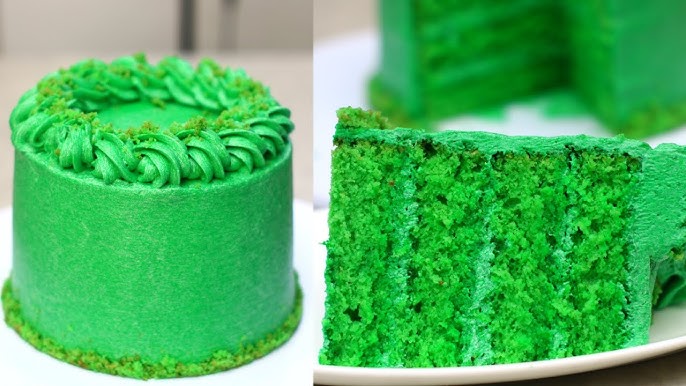
Lime green frosting is fun and youthful; olive or emerald tones convey elegance and wellness. Event planners frequently choose green cakes for outdoor or garden-themed celebrations, as the color seamlessly integrates with the surroundings and puts guests at ease.
Beyond its visual appeal, green evokes trust and renewal, making it perfect for introspective birthdays; when people celebrate their growth and personal changes.
6. White
White birthday cakes are classic. They convey sophistication, serenity, and appreciation. A white cake serves as a blank slate for emotional narratives.
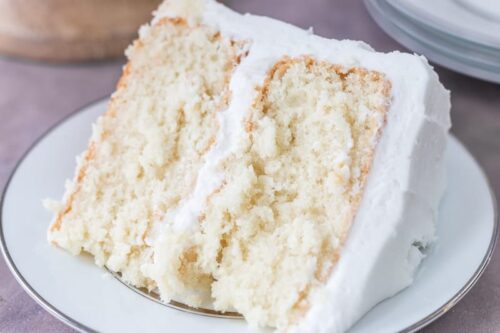
From simple all-white layers to white cakes adorned with touches of gold or floral accents, this color allows guests to concentrate on the emotions of the occasion without distractions.
White psychologically refreshes the visual space and helps people to feel rejuvenated and satisfied. For significant birthdays or family gatherings across generations, white cakes foster a sense of togetherness and contemplation.
7. Black and Dark Shades
Though unusual, black cakes are becoming popular. Deep colors like charcoal, dark navy, or espresso exude modern luxury. In color psychology, black signifies power, elegance, and mystery.
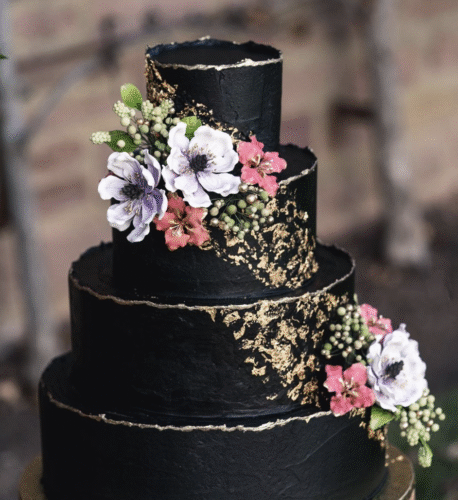
These cakes attract guests who value minimalism and high design. When combined with metallics like silver or copper, they create a visually stunning effect; a clear statement that says, “This event is unique.”
However, dark colors can also evoke feelings of introspection and seriousness, making them ideal for adult gatherings, evening events, or creatively themed birthdays.
8. Multicolour and Gradient Cakes
Some cakes completely break the single-color mold. Gradient cakes (according to findings) enhances emotional balance. For instance, a shift from blue to pink can represent harmony between peace and passion, while rainbow cakes exude joy and inclusivity.
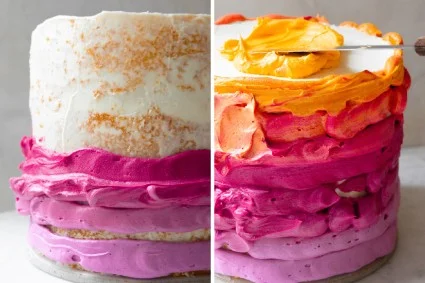
These cakes captivate guests visually, sparking curiosity and playfulness. Children and young adults, in particular, are drawn to vibrant multicolour designs as they boost dopamine, the brain’s “happy” chemical.
For imaginative event planners, multicolour cakes present chances to showcase personality diversity and emotional depth, with each slice offering a new shade of experience.
How Event Planners Utilize Cake Color Psychology
Professional event planners now incorporate cake color selections into the overall mood design of events. The lighting, table settings, background, and even music often match the selected cake color. For example:
- A coral-pink cake might be combined with soft jazz and pastel table linens.
- A blue-and-white cake could be showcased under cool-toned lighting to promote tranquility.
- A gold cake may shine best under warm, golden fairy lights accompanied by lively, festive music.
When color coordination is in sync, guests subconsciously perceive harmony. They may not express it, but they experience the celebration more profoundly.
Some Cultural Significance of Color Choices
In Nigeria and many regions of Africa, colors hold significant cultural meanings.
- White typically represents purity and blessings.
- Gold symbolizes wealth and celebration.
- Green signifies peace, fertility, and new beginnings.
Understanding these deeper cultural meanings aids event planners and bakers in creating cakes that resonate beyond mere appearance, and emotionally connecting with guests on a cultural level as well.
Every birthday cake is more than just sugar and sponge; it serves as a silent communicator. Through color, it conveys the emotional essence of the celebration.
The next time you organize a birthday or bake a cake, keep in mind: you’re not just blending colors but you’re also shaping emotions, creating memories, and narrating a story that every guest can appreciate.


